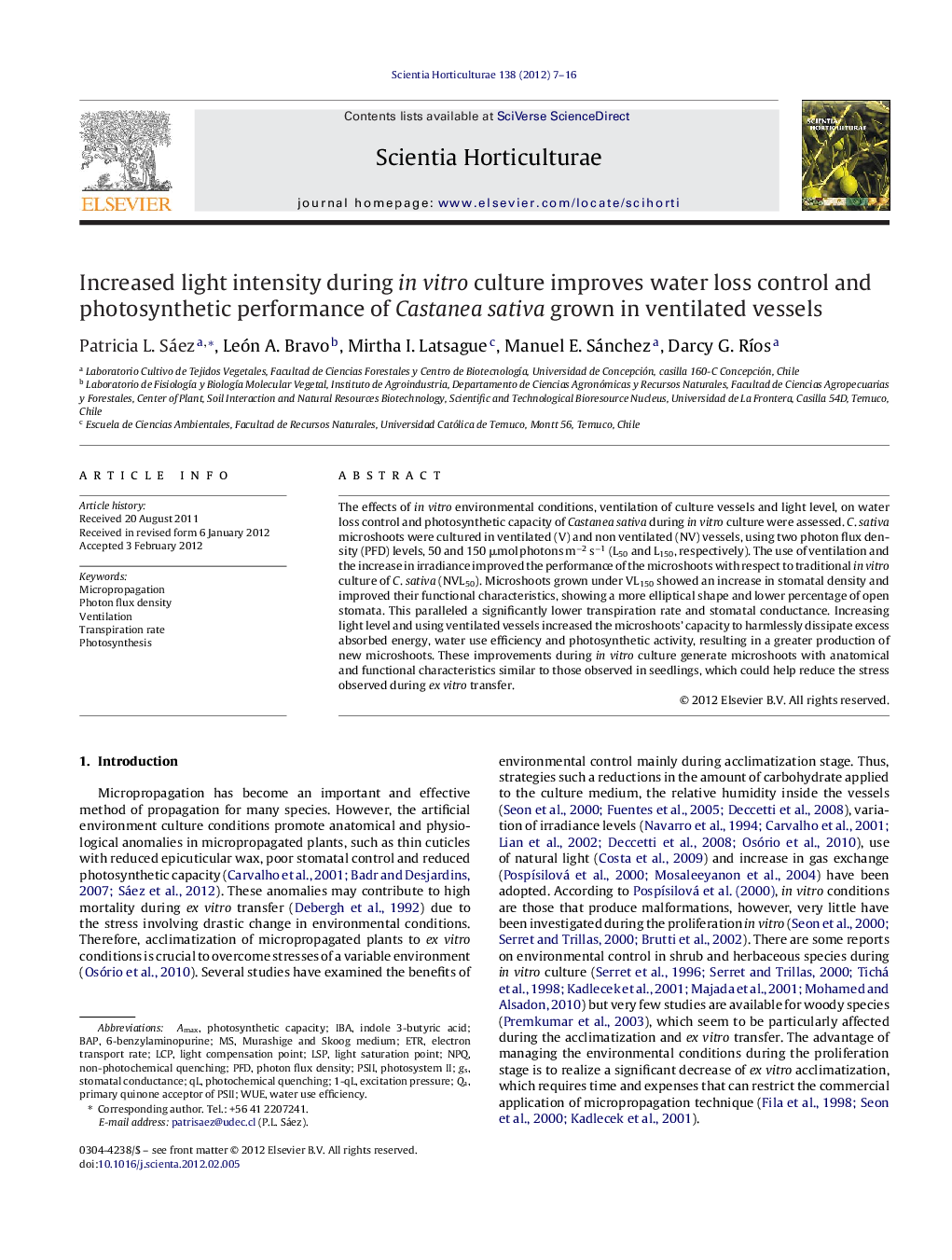| کد مقاله | کد نشریه | سال انتشار | مقاله انگلیسی | نسخه تمام متن |
|---|---|---|---|---|
| 4567688 | 1628860 | 2012 | 10 صفحه PDF | دانلود رایگان |

The effects of in vitro environmental conditions, ventilation of culture vessels and light level, on water loss control and photosynthetic capacity of Castanea sativa during in vitro culture were assessed. C. sativa microshoots were cultured in ventilated (V) and non ventilated (NV) vessels, using two photon flux density (PFD) levels, 50 and 150 μmol photons m−2 s−1 (L50 and L150, respectively). The use of ventilation and the increase in irradiance improved the performance of the microshoots with respect to traditional in vitro culture of C. sativa (NVL50). Microshoots grown under VL150 showed an increase in stomatal density and improved their functional characteristics, showing a more elliptical shape and lower percentage of open stomata. This paralleled a significantly lower transpiration rate and stomatal conductance. Increasing light level and using ventilated vessels increased the microshoots’ capacity to harmlessly dissipate excess absorbed energy, water use efficiency and photosynthetic activity, resulting in a greater production of new microshoots. These improvements during in vitro culture generate microshoots with anatomical and functional characteristics similar to those observed in seedlings, which could help reduce the stress observed during ex vitro transfer.
► The effect of ventilation and light were assessed on C. sativa microshoots.
► Ventilated (V) vessels and 150 mol photons m−2 s−1 (L150) produce the best result.
► VL150 improved stomata characteristics reduced transpiration and stomatal conductance.
► VL150 increased thermal dissipation capacity and photosynthetic activity.
► VL150 improved water use efficiency, resulting in greater proliferation rate.
Journal: Scientia Horticulturae - Volume 138, 1 May 2012, Pages 7–16